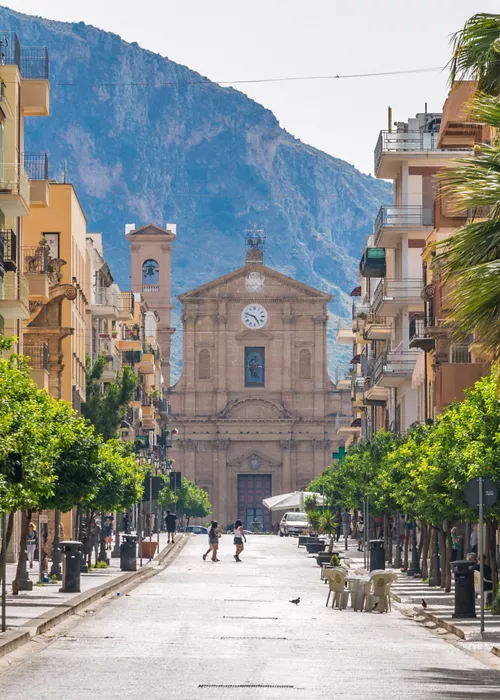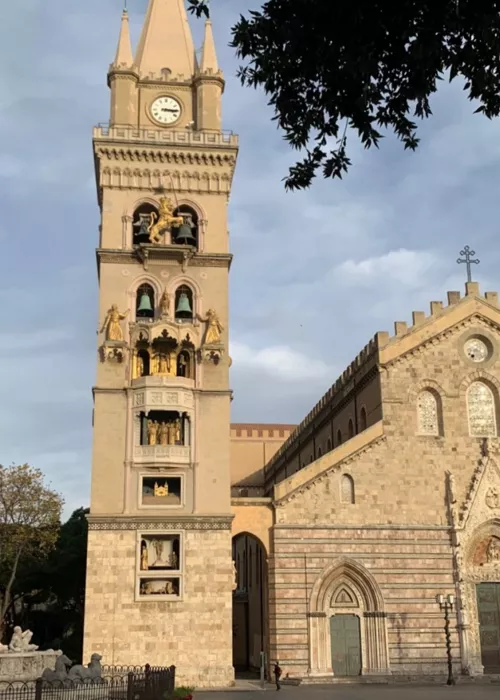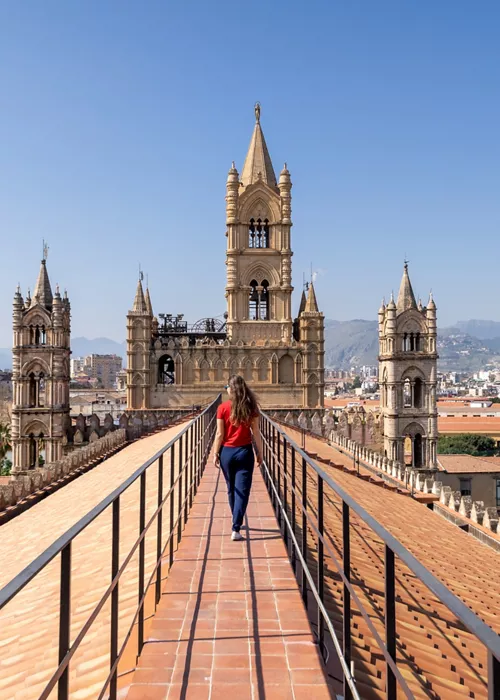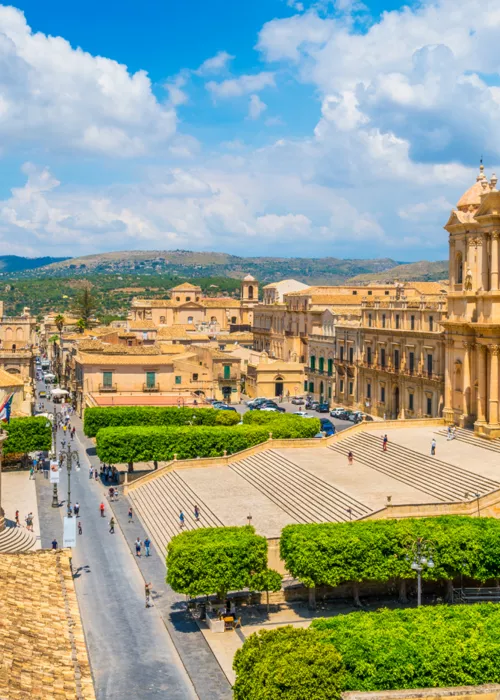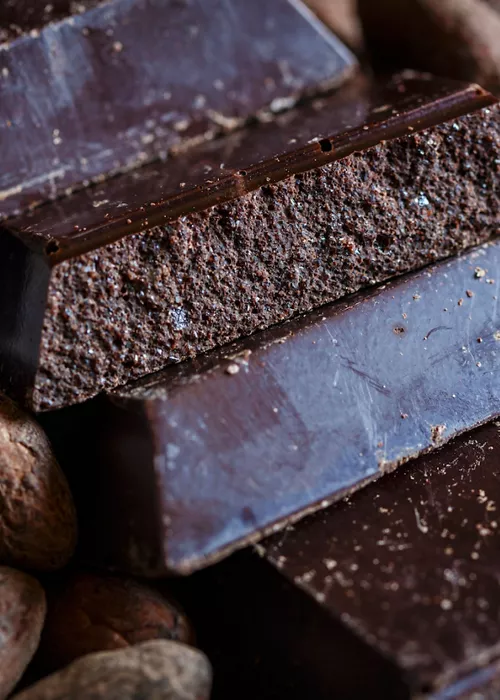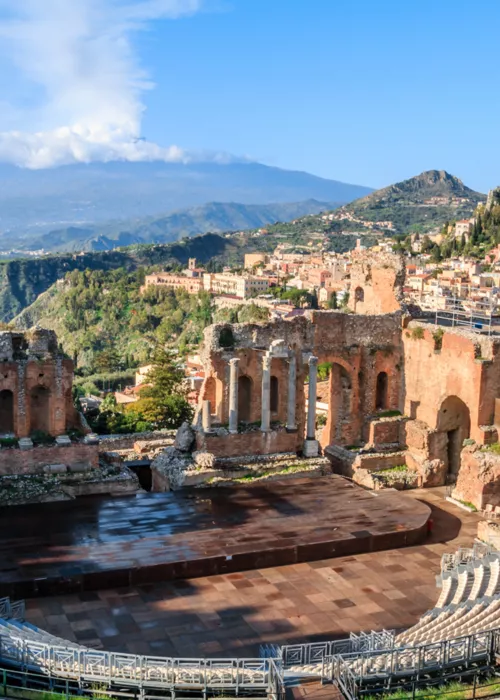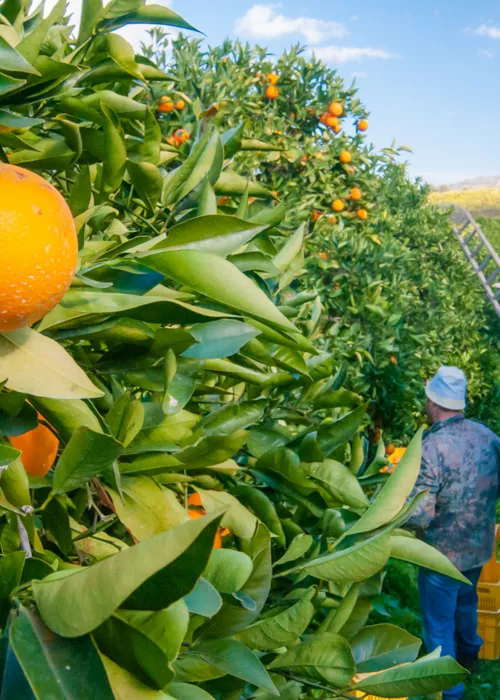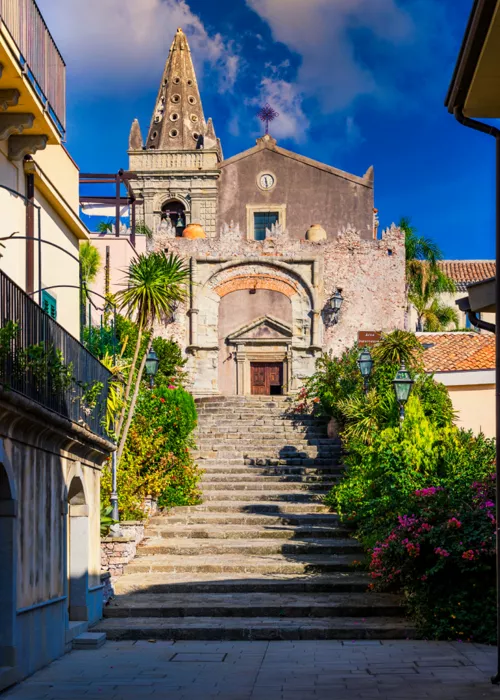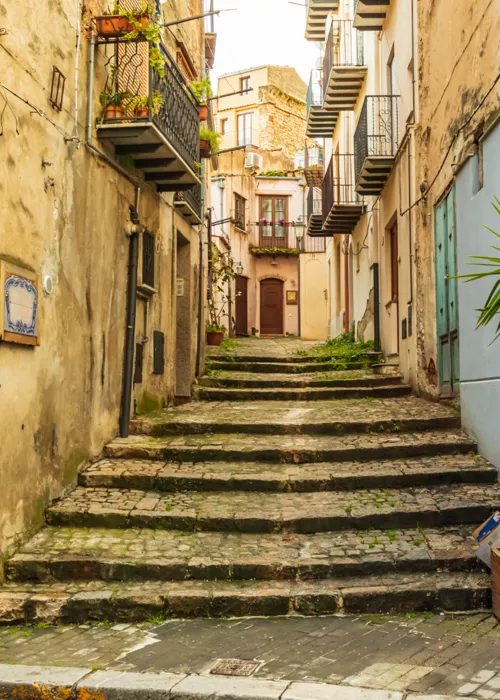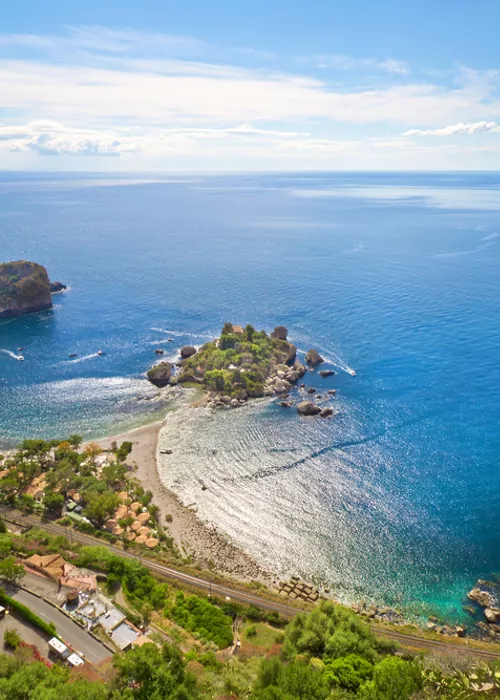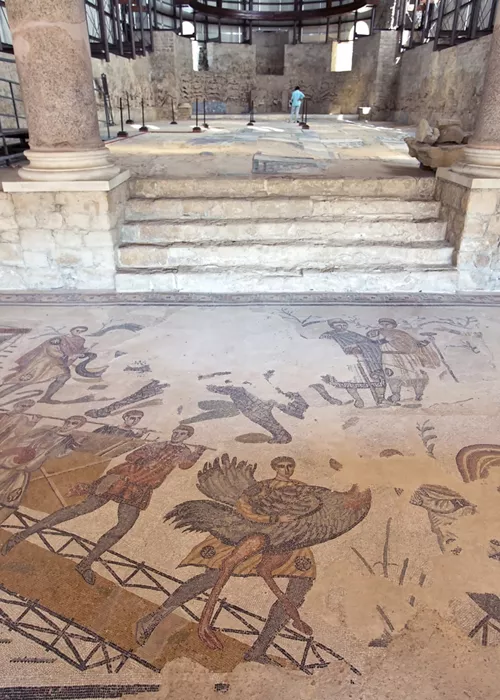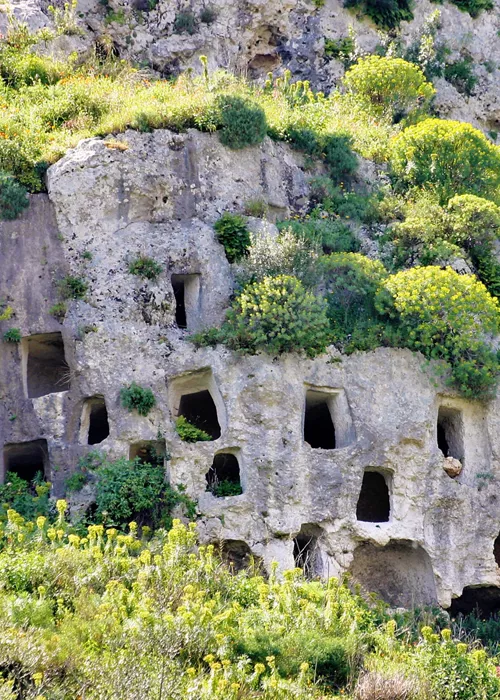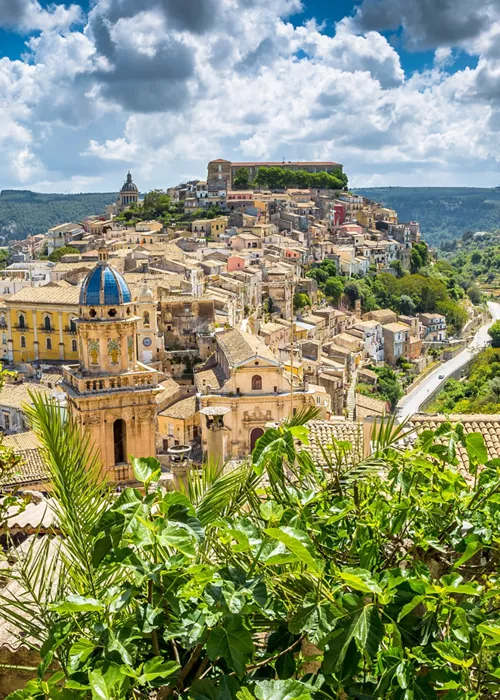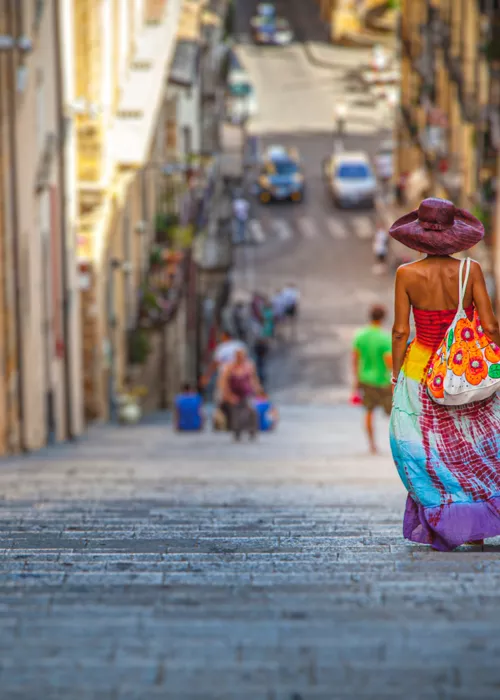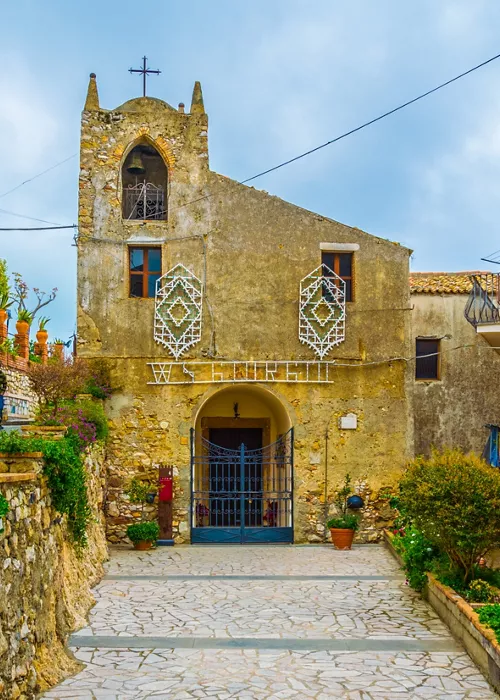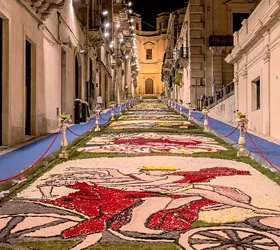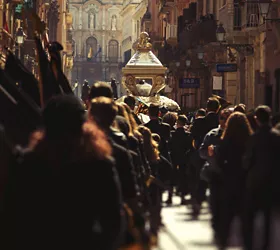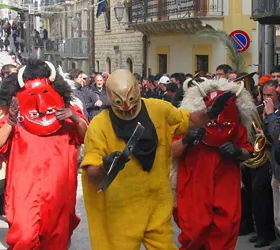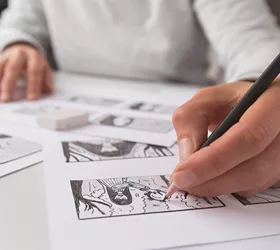3 Villages Along Sicily’s Via Francigena
13 minutes

Index
Long distance hikes are the ideal way to travel slowly between villages while appreciating the charm of nature. These three villages all belong to the ‘Borghi Più Belli d’Italia’ (most beautiful villages in Italy) list, and are also all located on a branch of the Sicilian Via Francigena, crossing the Madonie mountains.
Gangi

Find your way in a real-life maze as you wander around Gangi, one of Sicily’s most beautiful and authentic Medieval villages. Stop at scenic viewpoints and let your gaze travel across the Madonie mountains, all the way to Mount Etna on clear days.
Top 5 things not to miss
- The decorated ceilings of Palazzo Bongiorno.
- Guided tour of the cathedral including crypt and Torre dei Ventimiglia.
- Walking through narrow streets up to the highest point in the village.
- Taking pictures in Gangi’s ‘selfie spots’.
- Food/Wine to taste: ‘cucchie’ biscuits with figs.
This is not just your everyday hilltop village. In Gangi, the mountain becomes the village - houses, palazzos and churches rise seamlessly out of the rock, stacked onto one another and reaching onto the sky like a Medieval version of the Tower of Babel.
Alleyways turn into staircases clinging to the rock, Pandas and Cinquecentos zip down laneways, brushing their wing mirrors ever so slightly - the street plan looks like a tangle of spaghetti and you quickly realize that following street cats is probably the best way to find your way around this dreamy, ethereal village. After all, they always know where to go.
The origins of Gangi are lost in that liminal land between ancient history and legend. The town is believed to be the mythical Engyon, founded by the Cretans in 1200 BC, famous for its temple dedicated to Rhea, the mother goddess. References to Crete can be found in the maze-like streets, a real life labyrinth, and in street names. I saw Via Dedalo, Via Minosse, and Via Minotauro - right at the center of the maze, of course.
In Gangi, nothing is what it seems - there’s always more than meets the eye. This is the case in San Nicolò, the Chiesa Madre (cathedral), connected to a squat stone tower. We walked in and disappeared for two hours, following local volunteers who led to the apse first, to see a monumental painting by Giuseppe Salerno depicting the parusia, the moment just before the Last Judgment.
Then, we made our way down into the crypt, to see the Fossa dei Parrini - row upon row of mummified bodies of priests from Gangi, who died between the 17th and 19th century. They’re all dressed in fine linen shirts and velvet hats and placed into individual niches, topped by a frame with the priest’s name, date of death, and poem summarizing their life deeds.
Some of the priests wear death masks, in others you can see their own skin, stretched and shiny like parchment. Entering the room, you walk past a sign saying ‘Venite e o vivi a visitar la morte, pria che la morte a visitar voi’ (Come, living ones, to visit death before death visits you) - after having seen the Last Judgement above, we did feel as if we’d walked through the gates of Hell.
There’s no Hell without Paradise, so we followed our modern-day Virgil up the stairs to the top of Torre dei Ventimiglia, a Gothic watchtower annexed to the church during its construction. We reached the top as the bells started tolling six o’clock, and leaned across two-light arched windows to see Gangi extending at our feet, row upon row of houses gently sloping down like theater seats, stretching towards the Madonie mountains.
However, Gangi is not just one of the ‘Borghi Più Belli d’Italia’ (most beautiful villages in Italy), all about mountain views and Medieval suggestions. Palazzo Bongiorno, one of the most spectacular noble houses in the village, was once the headquarters of the Accademia degli Industriosi, a literary circle with links to the Freemasons, that published numerous literary works and influenced cultural life in the Madonie. The Palazzo now houses the Mayor’s office and city council - it’s free to visit, to admire the intricate trompe l’oeil ceilings with classic and allegorical scenes.
It’s not hard to come across great views in Gangi. One of the most scenic viewpoints is the Belvedere opposite the Chiesa Madre - it’s especially beautiful at sunset, when the sun sets right across, illuminating the Gangi rooftops as the lights slowly start to twinkle, looking like a Nativity scene.
We noticed a sign saying ‘Gangi selfie spot’ - there are 12 in total all over the village and surroundings, collecting viewpoints, sights and street views - including the best places to get views of Mount Etna towering over the city, if you’re lucky to be visiting on a clear day. You can find a list with their location on the Visit Gangi website, or you can try looking for them all yourself, recreating your own treasure hunt into a real-life stone maze.
Try finding the SS. Salvatore Church, with the only surviving tiled belltower, or the ‘Via degli Odori’, with flower pots full of aromatic plants like lavender, liquorice and lemon verbena. Don’t miss climbing to the highest spot in the village, surrounded by rock formations and crumbling Medieval walls, with a viewpoint guarded by a ragged mob of friendly street cats.
Don’t leave Gangi without exploring the village at night - especially in autumn or winter, when the streets are empty and silent. Follow the sound of your footsteps through ancient stones, dizzying staircases and charming cul-de-sacs, cherish the feeling of getting lost, until you’ll wonder whether the sky is indeed overhead - or maybe it’s at your feet, and you’re walking through a dream.
Gangi: Useful Information
Best time to visit: Try to avoid visiting during high season (July/August and the Christmas period), when Gangi is popular with tourists and returning expats. September/October is a great time to visit, and even winter can be truly magical - especially if it snows.
How to get there: Gangi is roughly halfway between Catania and Palermo airport, about a 2 hour drive from both airports. Public transportation is more convenient from Palermo - Sais Autolinee buses connect the village from Palermo Centrale station.
Petralia Soprana

Let your gaze travel from Mount Etna to the sea, and follow medieval pilgrimage routes across the Madonie mountains to this fascinating village, where the charm of stone has inspired generations of artists across history.
Top 5 things not to miss
- Views over the Madonie from the Loreto Belvedere.
- Wooden crucifixes sculpted by Frate Umile da Petralia.
- Walking one or more stages of the Via Francigena di Sicilia.
- Exploring the Madonie Mountains.
- Food/Wine to taste: ‘sfogghiu Madonita’ cake made with candied pumpkin, tuma cheese and chocolate.
Tall grass swayed in the wind, between one freshly-ploughed field and another. Two donkeys paced lazily along a dry-stone wall. Overhead, a particoloured sky - half bright blue, dotted with fluffy clouds, half dark grey, harbinger of a fast-approaching storm.
The rain started falling just as we turned into a regia trazzera, a track created by goat and sheep herds moving across the mountains, heading down a steep slope. A lone farmer on his Ape car came by, and then there was just silence, save for the rhythmic tapping of the rain and the faint hum of wind turbines along the hilltops, so common in this part of Sicily’s interior.
We were walking along a stage of the Via Francigena di Sicilia, from Gangi to the nearby village of Petralia Soprana, selected as one of the ‘Borghi Più Belli d’Italia’ (most beautiful villages in Italy). The Via Francigena is a network of trails dating back to the early Middle Ages, used by pilgrims from all over Europe to reach Rome. Four separate trails cross Sicily - we were on the Palermo-Messina itinerary, crossing the Madonie mountains before heading northward to the Nebrodi and Peloritani, and finally to the Port of Messina where pilgrims used to set sail for mainland Italy.
The itinerary mainly follows minor country roads, paths and trails, ending at villages that are almost always far from the beaten path. Petralia Soprana is one of them - it sits along a ridge in the heart of the Madonie, overlooking a landscape where the ochre of fields sits along patches of mountain forest and terracotta roofs.
We started our visit to Petralia Soprana with the three viewpoints, where we felt as if we were standing on the top of Sicily. From the Loreto belvedere, you can see Mount Etna and all the way to Enna and Caltanissetta on clear days; at the Carmine viewpoint, views stretch over Western Sicily, and from opposite the Chiesa Madre, there’s Etna once again, towering over the village of Gangi rising from the mountaintop.
The origins of Petralia date back to the time of the Sicani, the oldest inhabitants of Sicily, who settled the Madonie before the arrival of the Greeks. They called the town Petra, and in the 9th century AD the Arabs changed its name to Batraliah, meaning ‘high stone’.
Stone lies close to the heart of Petralia Soprana. Stone is in the village name, it’s in palazzos, churches, houses and pavements, and stone becomes art, in the 16th century sculptures by the Gagini family and Serpotta brothers, in the carved portals and Baroque fountains.
Petralia Soprana was also the birthplace of Giovan Francesco Pintorno, also known as Frate Umile da Petralia, a 17th century friar and sculptor. Frate Umile preferred wood to stone, and left all over Sicily a collection of 33 works depicting Christ on the cross, known for their dramatic style that emphasizes suffering and pain.
You can see Frate Umile’s first crucifix in the Chiesa Madre dedicated to Saints Pietro and Paolo, with a colonnade running along the side and a belltower dating back to Norman times. There are many other churches worth looking for all over Petralia - Santa Maria di Loreto, with tiled spires and curved Baroque decorations, or the Salvatore church, with a unique elliptical plan, probably a former mosque transformed into a church.
There’s one last, unmissable stop before leaving Petralia Soprana - Bar Pasticceria Aspromonte, just opposite the Municipio. It’s the best place in the village to try sfogghiu madonita, a cake made with pastry filled with tuma (unsalted local cheese), candied pumpkin, and chocolate in pieces. It’s hearty and filling, without being excessively sweet - the ideal snack to carry along while hiking along the Via Francigena.
Petralia Soprana: Useful Information
Best time to visit: Autumn and Spring are great times to visit Petralia Soprana, with smaller crowds and more affordable prices. Late summer is also a good time to attend festivals like Ballo della Cordella, with barn dances to honor the harvest. Easter is also a good time to visit for religious parades, but it can get busy with local people visiting family.
How to get there: Palermo is the closest airport to Petralia Soprana, about 2 hours drive away. There are also Sais Autolinee buses connecting the village to Palermo Centrale station.
Sperlinga

Dive deep into the rock to uncover the heart of Sperlinga, a village born from natural caves that became homes, and then became a castle. Climb to the highest tower and descend to the deepest cave, before visiting a neighborhood where cave houses can still be found.
Top 5 things not to miss
- Sperlinga Castle, above and underground.
- The Borgo Rupestre with ancient cave houses.
- Hiking along the Via Francigena.
- Visiting the spot where Robert Capa took one of his most iconic pictures.
- Food/Wine to taste: frascatela, wheat polenta with lardo and broccoli.
The rocks are where it all began. A mountain of brittle sandstone, dug and eroded by the elements into natural caves, where Prehistoric people sought shelter. Some of these caves became the heart of a massive castle, standing on the highest cliff, a vantage point over the Madonie mountains.
The village name, Sperlinga, comes from the Latin spelunca, meaning cave. Centuries later, Sperlinga is no longer a cave town. Much of the castle now lies above ground, cave dwellings have been replaced by brick-and-mortar homes, and only a few survive - but the village heart remains in the caves, where the wind blowing through is the same that led ancient Sicilians there, three thousand years ago.
Sperlinga, included in the list of ‘Borghi Più Belli d’Italia’ (most beautiful villages in Italy), welcomed with silence and stillness, a late weekday morning. A storm was approaching, and not a soul was to be seen wandering the two main streets that make up the village. We bought castle tickets from a bar with a sign saying ‘Biglietti castello’ outside, and proceeded to walk up to the highest point in the village.

The castle was partly excavated into the sandstone from the 12th century BC, partly built above ground two thousand years later. Sperlinga Castle is well known for having been one of the key locations during the Sicilian Vespers, a 1282 rebellion that turned into a war, ending with the expulsion of the French rulers from the islands. Sperlinga was one of the last towns to be loyal to the Anjou king, and allowed a French garrison to shelter in the castle for a year. The event is marked in stone by an inscription right over the entrance portal - Quod Siculis placuit sola Sperlinga negavit (Sperlinga denied what the Sicilians decided).
The above-ground portion of the castle includes a church and a couple of rooms housing an exhibition about notable visitors to Sperlinga, from Al-Idrisi to Escher, Capa, and Herman Hesse. However, it’s in the below-ground rooms where you’ll breathe the soul of the castle - and of Sperlinga as a whole. Caves became stables, storage for farm tools and ancient looms; some were prisons, others water tanks, now empty and with shiny euro coins scattered on top.
We descended down a rickety wooden staircase to one of the most mysterious and fascinating rooms, round in shape with 12 niches carved into the wall. A faded sign on the wall informed that not much is known about the purpose of those niches, whether they had been carved for cult purposes or were an ancient way to measure time.
In another cave room, a round blue egg stood in the center, with the image of a woman sitting and the words ‘Io rinascerò ogni volta che sarò chiamata eretica’ (I will be born again every time I am called heretic), a homage to the women that were executed during the dark times of the counter reformation.
Tiny archways connected the various cave spaces, and windows framed the village, but the best view over Sperlinga is from the top of the castle, which you can access with a steep flight of stairs carved into the sandstone. We walked under an arch to find ourselves between the battlements of the tower, with the rooftops below, with the ochre and gold landscape of the Madonie mountains extending just behind.
A short distance from the castle we visited the Borgo Rupestre, a beehive network of natural caves that became humble homes over the centuries. There, families lived side by side with their animals until the 1950s, with no electricity or sanitation facilities. Everybody was moved to better houses during the post-war boom, and the cave homes were turned into storage spaces - save for a few that house an ethnographic museum. Luxury cave houses for tourists are not (yet) a thing, but it is rumored that an elderly woman has moved back into her cave home, where she was born and lived her childhood..
Sperlinga lies very close to the heart of Sicily, where the Madonie and Nebrodi mountain ranges meet. It is located on the Via Francigena di Sicilia, and can be reached from Gangi after a challenging 20 km hike with steep climbs crossing sun-bleached plateaus. The trail then continues to Nicosia, known alongside Sperlinga for being one of the last surviving places in Sicily where the Gallo-Italic language is spoken.
You may hear Gallo-Italic while walking around Sperlinga, and notice it’s completely different from regular Sicilian dialect. It was brought to the interior of Sicily by the Lombards, who migrated to the island during the Norman domination - and survived with little change for almost one thousand years.
There’s another spot worth visiting, just off the road connecting Gangi to Sperlinga. A sign on a farm track marks the spot where photographer Robert Capa took one of his best known images of World War II, depicting a local farmer showing American soldiers the direction where Germans escaped just after the 1943 Armistice. Not much is changed - looking at the image and at the real-life scene in front of you, you’ll see the same hill, and the same patch of trees on the top. The only difference is the state road, where cars zip by every so often, and a house halfway up the hill.
Something may have changed, but a lot has remained the same. This seemed to be a leitmotif we encountered as we made our way across Sicilian villages. Sperlinga looks very different than it did when the Ancient Sicilians first came across the sandstone mountain, and decided to turn it into a cave town - but its heart still lies deep within the rock.
Sperlinga: Useful Information
Best time to visit: Late summer is a great time to visit for festivals and events - on August 16th, a historic parade commemorates the resistance of the French garrison, and ends with a fireworks display. Otherwise, Autumn and Spring are great times to visit, especially if you’re planning to hike the Via Francigena or explore the surrounding mountains.
How to get there: Palermo is the most convenient airport. You can drive from there to Sperlinga in about two hours, or hop on a bus from Palermo that will take about 2 and a half hours.
Article written about the experience of Margherita Ragg and Nicholas Burns.


